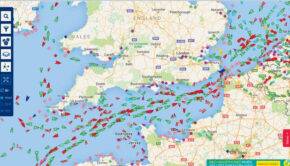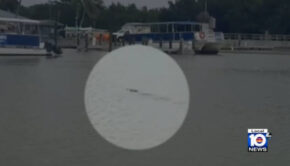Understanding Electric Shock Drowning
Published on April 28th, 2015
by Gowrie Group
Soon boats will be launched, kids will be swimming, sailing programs will start, and marinas will be in full operation. With this in mind, now is a good time to increase your knowledge of Electric Shock Drowning (ESD). Many people have never heard of ESD, and those that have typically don’t realize the common situations that can be putting people at risk for ESD.
These common waterfront scenarios seem innocuous, however ESD should be considered as a risk in each. This Gowrie Risk Report helps explain why.
• A sailor cleaning their boat’s bottom before a weekend race.
• A powerboat owner swimming to inspect a new propeller while tied to the dock.
• A marina employee falling off a new dock.
• A boat owner climbing out of the water using the metal ladder on their swim platform.
• A group of kids jumping off a marina dock and using the marina’s emergency escape ladders to get out.
• An orange extension cord draped across a lake dock to charge a ski boat’s battery.
What exactly is Electric Shock Drowning? ESD is caused by alternating current (AC) flowing through fresh water encountering a human body. The current tries to pass through the body and causes skeletal muscular paralysis, which ultimately results in a drowning. The electricity tends to enter the water from an electric fault from a nearby dock or marina’s wiring, or from a boat that is connected to a power supply. Often, the electric fault occurring from the boat is intermittent and only leaks current into the water when a switch is flipped and an electrical device cycles on.
Why have I never heard of this? ESD is a relatively new problem, given that 20 years ago very few docks were powered. Given the prevalence of electric boat lifts, lights, and shore-power connections on docks of all sizes and at nearly every marina, the risk of ESD is real today. In the 80’s it was commonly considered safe to dive off a dock without a thought of ESD. Today, the common summertime activity of swimming off a dock or diving under a boat can result in a tragedy.
Fresh vs. Salt Water. While ESD can occur in salt water environments, the risk is much higher in fresh water bodies of water (lakes, ponds, rivers) because of differences in conductivity. Salt water naturally has a high conductivity and low resistance, so leaking current in water tends to go around a human body to stay in the low resistant salt water. In fresh water, which has low conductivity and high resistance, the electrical fault or current seeks a path of lower resistance to get back to its source – and a human body can serve as this low resistance path. Fresh water is nearly 70x more resistive than salt water.
Full report here.









 We’ll keep your information safe.
We’ll keep your information safe.